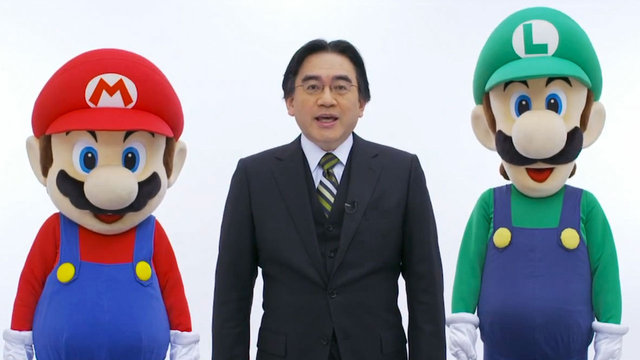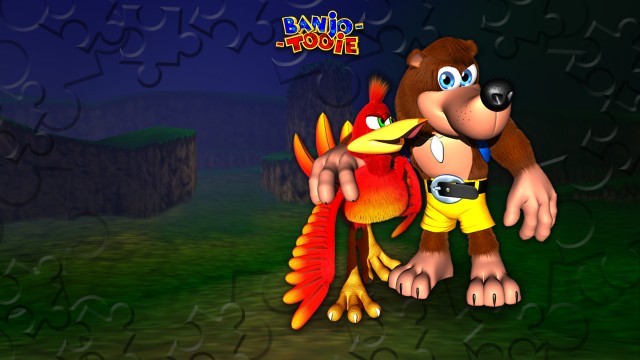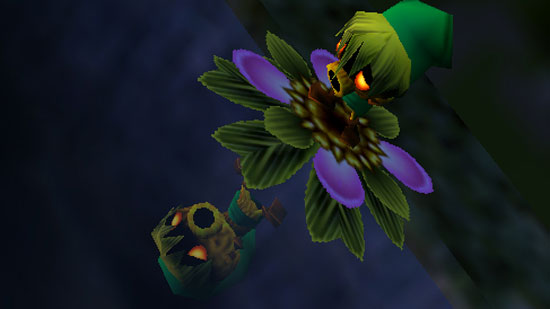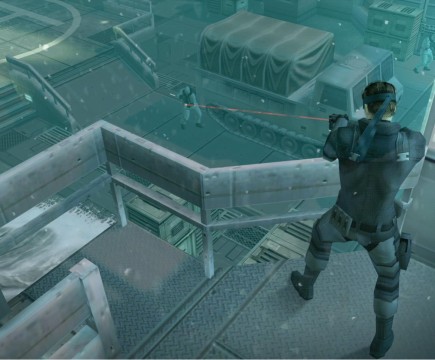
Nintendo has had quite a relationship with E3 over the years. From jaw dropping announcements to humiliating gaffes, the company has seen its ups and downs trying its hardest to build hype and excitement over its upcoming video game projects. It’s hard to measure success at E3, or declare winners and losers, but if anything can be said about Nintendo at the Electronic Entertainment Expo, it’s that the company is willing to throw the dice each and every time– for better or worse. Let’s take a stroll down memory lane and check out the highlights of Nintendo at E3!
1995
Ground zero for E3 was in 1995. This first show was an important stepping stone for video games in general, with the hope being that the event would lend some legitimacy to the industry by drawing mainstream media attention. Nintendo broke hearts prior to the show by announcing Ultra (later Nintendo) 64 would be missing in action for another year, but made up for it by putting some excellent Rare titles on full display. Accompanied by dancers (really), Killer Instinct and Donkey Kong Country 2 were both major draws. Also vying for attention? EarthBound. Ah, but if only one could go back in time and preorder like thirty copies of the criminally under bought game… Last and, well, probably least, Virtual Boy was announced. Poor little Virtual Boy. Some people in the crowd probably had an inkling the monochrome red graphics alone were a sign of it inevitably landing dead on arrival, but Nintendo could dream, and dream it did.
1996
Things got splashier with Nintendo’s 1996 booth, with the company pulling attendees through a captivating menagerie of lights and signage, only to be stopped by a waiting Stormtrooper before being permitted to test out its games. Shadows of the Empire, the huge, everything-but-a-movie Star Wars multimedia juggernaut was on hand, thus the Imperial lapdog, but there were plenty of other things to ogle. Nintendo 64 itself officially bowed at the show, along with Super Mario 64, Wave Race 64, Pilotwings 64 (see a trend?), and more. Game Boy Pocket was introduced, along with word that Virtual Boy would be dropping to a cool hundred bucks (sadly, that didn’t do much to help the system’s sales). Overall a pretty big E3 for Nintendo.

1997
Transitioning from LA to Atlanta, Georgia, 1997 was a solid year for Nintendo at E3. Rare was still a major player for the company, debuting Banjo-Kazooie, Conker 64 (with the character much more family-friendly at this point), and Goldeneye 007. Banjo-Kazooie was especially important at that year’s event, with Nintendo constructing a massive display for it at its booth. Though there was some footage of F-Zero X, the absolute show-stopper had to be what would go on to become Ocarina of Time. The Legend of Zelda for Nintendo 64 set the world on notice– big things were afoot in Kyoto, and nobody was ready for it. Including Nintendo! The game had quite the rigorous development cycle, at the time boasting the largest development team ever seen for a Nintendo game. That’s a story for another day, however. It wouldn’t be until the next year when Nintendo would really begin to draw the curtain back on that legendary title.
1998
Now this was one heck of a year for Nintendo. Pokémon Red and Blue were being primed for their North American launches, with an enormous marketing push in tow. The games were discussed along with the accompanying cartoon and merchandising that would be dropping at the same time, and though much enthusiasm was shown, it’s hard to believe that anyone could have anticipated how monumental that franchise would become for Nintendo moving forward. Game Boy Color, along with the Game Boy Camera and Printer, were also unveiled. Nintendo 64 wasn’t sitting on its laurels, however, as F-Zero X and Conker 64 were both shown off to the crowd. The absolute show stealer for the second year in a row, though, was Ocarina of Time. Nintendo stalwart Shigeru Miyamoto’s enthusiasm for the title was infectious, and it was obvious that the game was going to blow minds when it finally launched later that year.
1999
Back in Los Angeles, where the show has remained ever since, Nintendo’s followup to its previous E3 was slightly underwhelming by comparison. GameCube, then-dubbed Project: Dolphin, was detailed but not shown, though its specs were certainly impressive regardless. Nintendo 64 was still the company’s number one console, and the biggest announcements all revolved around its software. Donkey Kong 64 and Perfect Dark wowed attendees, along with a quirky new IP from Nintendo called Super Smash Bros. (whatever that was). Interestingly, Eternal Darkness was mentioned at this E3– as a Nintendo 64 title! Pokémon Yellow led the charge for Game Boy, with Pokémon Pinball, R-Type DX, and Conker’s Pocket Tales rounding things off. Pokémon was officially red hot at that point, so a large display was dedicated to Yellow on the show floor.

2000
A new millennium sadly didn’t bring with it a new batch of systems for E3 2000, despite Game Boy Advance and GameCube both being already largely known to the video game world. Nintendo prioritized the official reveals of both for its upcoming Spaceworld 2000 event. The company instead decided to use E3 to shine the spotlight on its current gen offerings. Conker 64 had evolved into the notoriously adult Conker’s Bad Fur Day (accompanied with an open bar at its booth on the show floor!). A number of Nintendo 64 titles were displayed that would eventually go on to become GameCube games: Dinosaur Planet (retooled to be Star Fox Adventures), Resident Evil 0, and Eternal Darkness (shown off for the second time). Perfect Dark and Paper Mario were also shown, but Majora’s Mask was easily the biggest impending launch for the system. On the Game Boy Color side, Pokémon Gold and Silver were the main headliners. It was considered a quiet year for Nintendo, overall, but some solid games were shown off, for sure. And who could forget the enormous, working Game Boy Color made from Legos?!
2001
2001 was a huge endeavor for Nintendo. The company had two new systems to push, GameCube and Game Boy Advance, but chose to devote its keynote to the home console. GameCube was the bell of the ball, as a number of details were released regarding color options, memory cards, and software. Interestingly, Nintendo’s flirtations with other electronics developers was on full display at E3 2001, as a special version of the GameCube hardware with a built-in DVD player called the Panasonic Q was shown. This version of GameCube never left Japan, but was very enticing to those who were hoping to see Nintendo branch beyond a pure video game playing machine. For software, Luigi’s Mansion would be the first non-Mario game to herald a Nintendo console launch, and other titles slated for GameCube’s launch window included Wave Race: Blue Storm, Star Wars: Rogue Squadron II, Pikmin, and Super Smash Bros. Melee. Game Boy Advance had a presence at the show, of course, but it was primarily limited to demo kiosks. Word of mouth was intended to drive hype for the new handheld, which actually worked well enough.
2002
GameCube didn’t come barreling out of the gates like Nintendo had hoped, instead landing relatively softly, especially compared to PlayStation 2 and Xbox (the new kid on the block). The company’s E3 2002 presentation had a heaping mound of expectations placed on it, and Nintendo did its best to deliver. Resident Evil (the wonderful remake of the PSOne classic), Resident Evil 0, and Eternal Darkness all tapped into a more mature side of the Nintendo fan base. Super Mario Sunshine was unveiled, and would come out a scant few months after the show. Metroid Prime was big, though a lot of questions swirled around the sensibility of making the game a first-person experience. While Animal Crossing and Star Fox Adventures were also part of the presentation, they and every other game took a backseat to the reveal of what would become The Wind Waker.
Boasting cell shaded graphics that made the title look distinctly like a cartoon, it was miles removed from the ultra-realistic demo that had been played at Spaceworld 2001. Fans and pundits balked at the change, and Nintendo had to weather a storm of criticism for the art direction shift all the way until Wind Waker‘s release. Game Boy Advance was largely host to a variety of ports, like A Link to the Past and Super Mario Advance 3: Yoshi’s Island, but a huge standout amongst those games was the original title Metroid Fusion. The game was set to release alongside Metroid Prime and even offered connectivity between the two titles. Last but not least? WaveBird, GameCube’s wireless wonder controller, shocked attendees– yes, there was a time wireless was novel, youngsters! It was a stuffed show that got mixed reactions due to Wind Waker, but definitely pushed momentum in a more positive direction for Nintendo.

2003
Lackluster is often how Nintendo’s 2003 E3 showing is described, and with good reason: it just felt off. The focus of the presentation revolved around Game Boy Advance-GameCube connectivity, a feature that never found an audience and didn’t spark much enthusiasm from attendees. The Legend of Zelda: Four Swords Adventures, Pac-Man Vs., and Final Fantasy: Chrystal Chronicles all did some solid things with GBA connectivity, but overall the show lacked spark. Mario Kart: Double Dash!!, Metal Gear Solid: The Twin Snakes, Resident Evil 4, Viewtiful Joe, and Prince of Persia were some compelling pieces of software, but many of those titles having been revealed prior to E3 made their impact less felt. Game Boy Advance tried its best with Mario and Luigi: Superstar Saga and Metroid: Zero Mission, but the general consensus, fair or not, was that Nintendo left everyone in attendance wanting.
2004
What a comeback. E3 2004 brought Reggie Fils-Aime as president of Nintendo of America for the first time, and what a mark he left: not many Nintendo execs have been quoted as saying they’re “about kicking ass.” Reggie backed his punches with genuine muscle, as he brought quite the deluge of surprises with him. Nintendo DS was dropped and billed as a “third pillar” system, intended to join Game Boy Advance and GameCube (of course, it actually would go on to replace the now mothballed Game Boy line). The system’s oddball double screens showed promise, though attendees were certainly not instantly sold. A hint of Wii was wafted into the air, ever so subtly. The software was what really rocked the house, however, as Metroid Prime 2, Resident Evil 4 (this game had a monster of a development cycle), Super Mario 64 DS, Metroid Prime: Hunters, and The Legend of Zelda: The Minish Cap were either unveiled or given new trailers. Nothing, though, could trump the reaction of the crowd when it witnessed The Legend of Zelda: Twilight Princess for the first time. People wept. Like, real tears. And Miyamoto took the stage with a replica Hylian Shield and Master Sword. It was pure Nintendo magic and shocked the heck out of all the people who were still getting accustomed to Wind Waker‘s art direction. It was a truly epic Nintendo E3.
2005
Revolution, Wii’s placeholder name back in the day, made its first appearance to the world, but curiously Nintendo opted to keep the system’s motion controls under wraps for the time being. What was shown was a diminutive console that was designed to bring all sorts of new experiences to players, and the Virtual Console, which would offer a plethora of old games from across a variety of classic systems. Software announcements for Revolution were slim, though, as nothing really concrete was unveiled aside from a brief video of Metroid Prime 3: Corruption. For all the collectors out there, this E3 is where the much sought after DS cartridges containing a copy of a Twilight Princess trailer were distributed! DS provided some much needed oomph with the reveal of New Super Mario Bros., the first all-new 2D Mario platformer in years. Mario Kart DS also promised the first portable 3D release of the series, along with online capabilities, a franchise first. GameCube was still alive and kicking at this point, and the company had a number of titles to show off, including Pokémon XD: Gale of Darkness, Donkey Konga 2, Killer 7, and more. Finally, though Nintendo DS was still finding its place in the market, Nintendo declared it would be bringing Game Boy Micro to the market. A super slim and small version of the Game Boy Advance hardware, it would be the tiniest handheld the company ever produced. Nintendo’s 2005 E3 was more reserved feeling than the previous year, but it still left players excited about the future of the company.
Come back next time for more of Nintendo’s history at E3!




 ShareThis
ShareThis






